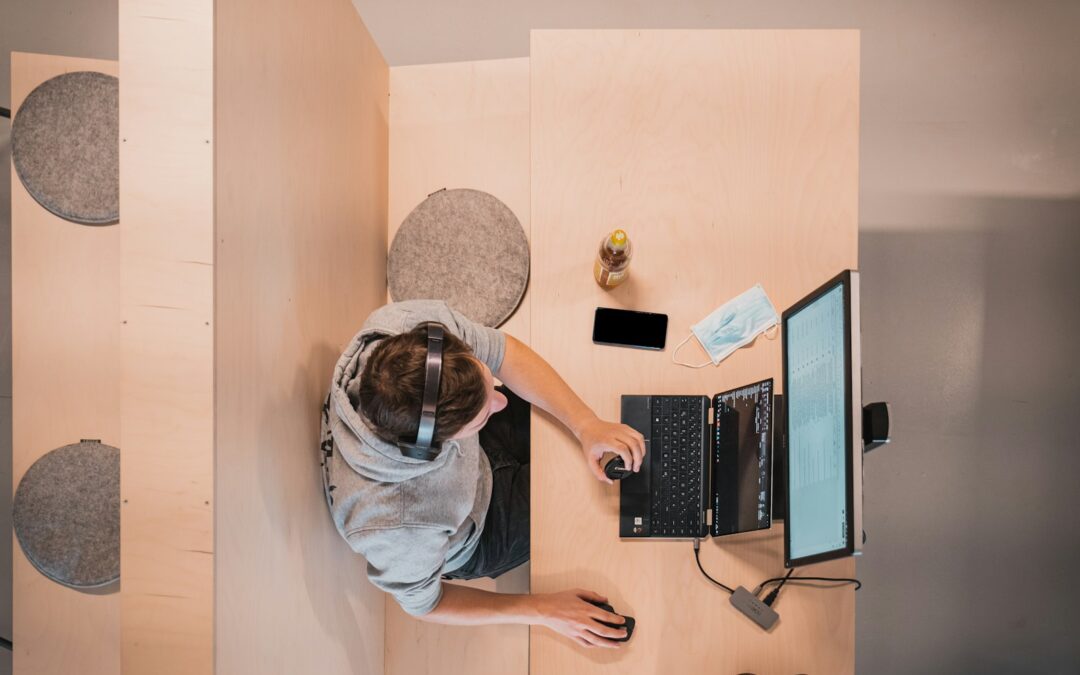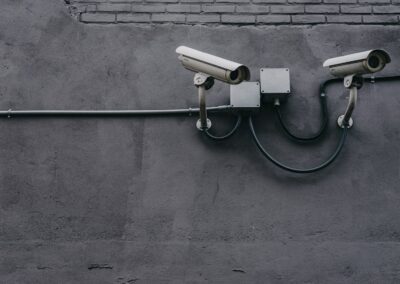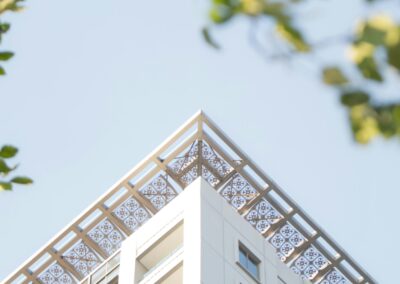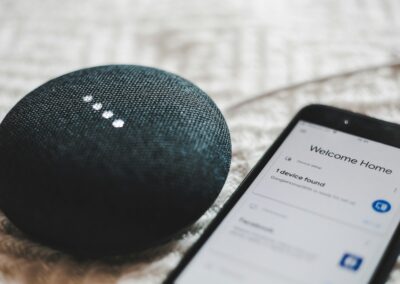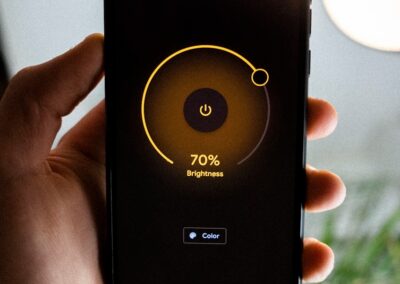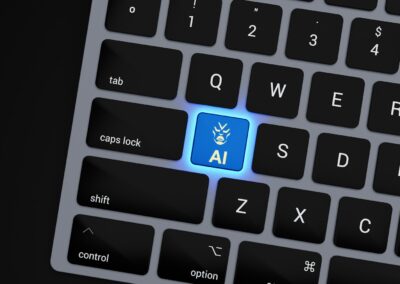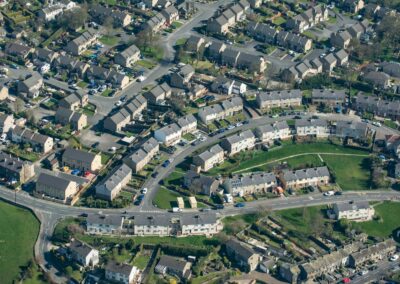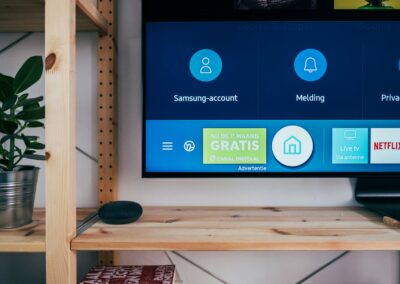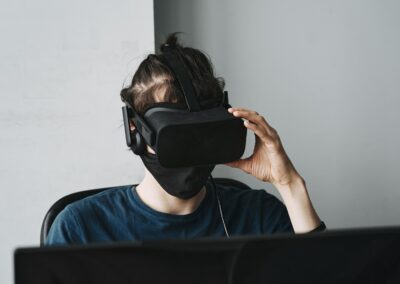Overcoming Obstacles in Smart Home Technology Integration
Understanding the Challenges of AI and IoT Integration
Integrating AI and IoT in existing homes presents significant challenges for homeowners and technology providers alike. As the demand for smart home technology increases, particularly in regions like Saudi Arabia and the UAE, the complexities of retrofitting traditional homes with advanced systems become more apparent. One of the primary challenges is the compatibility of new technologies with older infrastructure, which often lacks the wiring and network capabilities needed to support AI and IoT devices.
In Riyadh and Dubai, where luxury and innovation are hallmarks of urban development, integrating AI and IoT into existing homes is crucial for maintaining a competitive edge in the real estate market. However, homeowners often face difficulties related to the interoperability of devices from different manufacturers. Ensuring that various smart home components can communicate seamlessly with one another is essential for creating a cohesive and efficient system.
Moreover, the cost of retrofitting homes with AI and IoT technology can be prohibitive for many homeowners. The initial investment in smart home devices, coupled with the potential need for extensive home modifications, can deter people from adopting these technologies. Addressing these financial barriers is key to promoting widespread adoption of smart home solutions in both Saudi Arabia and the UAE.
Technological Solutions for Retrofitting Homes
Despite the challenges, several technological solutions are available to facilitate the integration of AI and IoT in existing homes. One effective approach is the use of wireless technologies, which eliminate the need for extensive rewiring. Wireless smart home devices, such as Wi-Fi-enabled thermostats and security cameras, can be easily installed and connected to a central hub, simplifying the retrofitting process.
In Dubai, developers are leveraging mesh networking technology to enhance the connectivity of IoT devices in large homes and buildings. Mesh networks create a robust and reliable wireless network by using multiple access points that communicate with each other, ensuring that all devices remain connected even in the presence of physical obstacles or interference. This technology is particularly beneficial for high-rise buildings and expansive villas common in the region.
Another promising solution is the development of modular smart home systems. These systems are designed to be scalable and adaptable, allowing homeowners to start with a basic setup and gradually add more devices as needed. This incremental approach not only reduces the initial cost but also allows homeowners to tailor their smart home environment to their specific needs and preferences. In Riyadh, such modular systems are gaining popularity, providing a flexible and cost-effective way to integrate AI and IoT technologies.
Ensuring Seamless Integration and User Experience
Ensuring a seamless integration of AI and IoT technologies in existing homes requires a focus on user experience and system interoperability. User-friendly interfaces and centralized control systems are essential for simplifying the management of multiple smart devices. In Saudi Arabia and the UAE, where technological sophistication is highly valued, companies are investing in the development of intuitive apps and voice-controlled assistants that make it easier for homeowners to interact with their smart home systems.
Interoperability standards are also crucial for the successful integration of AI and IoT devices. Industry-wide standards, such as Zigbee and Z-Wave, provide a common language that allows devices from different manufacturers to communicate and work together seamlessly. By adhering to these standards, technology providers can ensure that their products are compatible with a wide range of smart home ecosystems, enhancing the overall user experience.
In addition to technical considerations, addressing privacy and security concerns is paramount. Homeowners need to feel confident that their smart home systems are secure and that their personal data is protected. Implementing robust encryption protocols and providing transparent privacy policies can help build trust and encourage the adoption of AI and IoT technologies in homes across Riyadh and Dubai.
The Economic and Social Impact of Smart Home Integration
Economic Benefits of AI and IoT Integration
The integration of AI and IoT in existing homes offers significant economic benefits for homeowners and the broader economy. Smart home technologies can lead to substantial energy savings by optimizing the use of heating, cooling, and lighting systems. In regions like Saudi Arabia and the UAE, where energy consumption is high, the potential for cost savings is considerable. Smart thermostats, automated lighting, and energy-efficient appliances can reduce utility bills and contribute to more sustainable living.
Furthermore, the real estate market in cities like Riyadh and Dubai can benefit from the increased value of smart homes. Properties equipped with advanced AI and IoT systems are more attractive to buyers and renters, commanding higher prices and rental rates. This added value can provide a significant return on investment for homeowners who choose to retrofit their homes with smart technologies.
The adoption of smart home technologies also creates new business opportunities for technology providers, installers, and service providers. The demand for skilled professionals to design, install, and maintain these systems is growing, leading to job creation and economic growth. In the UAE, initiatives to promote smart home adoption are driving innovation and supporting the development of a vibrant tech ecosystem.
Social and Environmental Impact of Smart Homes
Beyond economic benefits, the integration of AI and IoT in existing homes has profound social and environmental impacts. Smart home technologies can improve the quality of life for residents by enhancing comfort, convenience, and security. For example, smart security systems with AI-driven cameras and sensors can provide real-time alerts and remote monitoring, giving homeowners peace of mind.
In terms of environmental impact, smart homes contribute to sustainability by reducing energy consumption and minimizing waste. Automated systems can optimize resource use, ensuring that lights and appliances are only active when needed. In regions like Dubai and Riyadh, where environmental sustainability is a growing concern, smart home technologies play a crucial role in promoting eco-friendly living.
The social impact of smart homes extends to the creation of connected communities. Smart home technologies can facilitate greater interaction and cooperation among neighbors through shared resources and community platforms. For instance, smart grids and shared solar energy systems can enable communities to generate and distribute renewable energy more efficiently, fostering a sense of collective responsibility and collaboration.
Conclusion: The Future of Smart Home Integration
Integrating AI and IoT into existing homes presents challenges, but with the right strategies and technologies, these obstacles can be overcome. The economic, social, and environmental benefits of smart homes make them a worthwhile investment for homeowners and a critical component of modern urban development. In Saudi Arabia and the UAE, cities like Riyadh and Dubai are leading the way in adopting smart home technologies, setting a benchmark for others to follow.
As technology continues to evolve, the potential for even greater integration and innovation in smart homes is vast. By embracing wireless technologies, modular systems, and industry standards, homeowners can create efficient, sustainable, and interconnected living spaces. The future of smart home integration is bright, promising enhanced quality of life, economic growth, and environmental sustainability.
—
#SmartHomes #AIIntegration #IoT #SustainableLiving #UAE #SaudiArabia #Riyadh #Dubai #ModernTechnology #BusinessSuccess #LeadershipSkills #ProjectManagement

